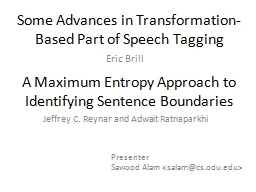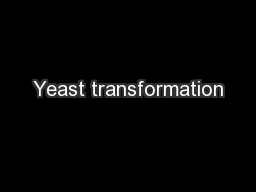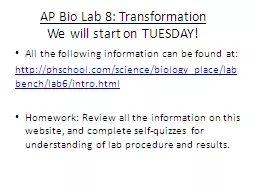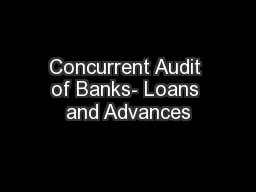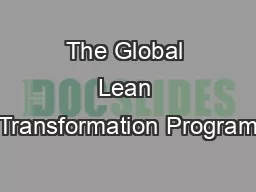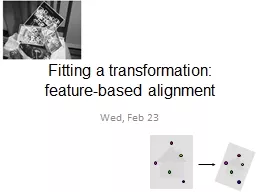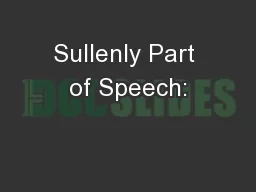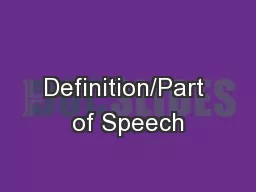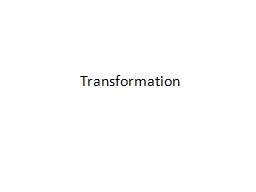PPT-Some Advances in Transformation-Based Part of Speech Taggin
Author : jane-oiler | Published Date : 2017-06-23
Eric Brill A Maximum Entropy Approach to Identifying Sentence Boundaries Jeffrey C Reynar and Adwait Ratnaparkhi Presenter Sawood Alam ltsalamcsoduedugt Some
Presentation Embed Code
Download Presentation
Download Presentation The PPT/PDF document "Some Advances in Transformation-Based Pa..." is the property of its rightful owner. Permission is granted to download and print the materials on this website for personal, non-commercial use only, and to display it on your personal computer provided you do not modify the materials and that you retain all copyright notices contained in the materials. By downloading content from our website, you accept the terms of this agreement.
Some Advances in Transformation-Based Part of Speech Taggin: Transcript
Download Rules Of Document
"Some Advances in Transformation-Based Part of Speech Taggin"The content belongs to its owner. You may download and print it for personal use, without modification, and keep all copyright notices. By downloading, you agree to these terms.
Related Documents

